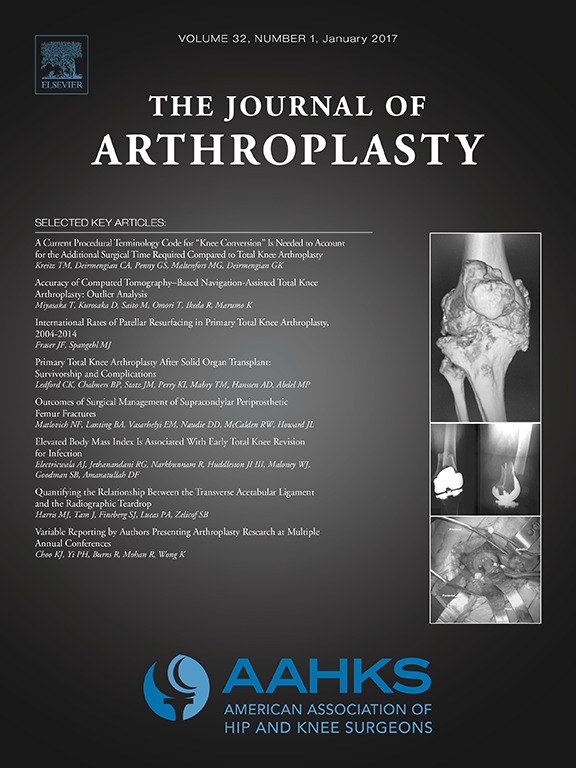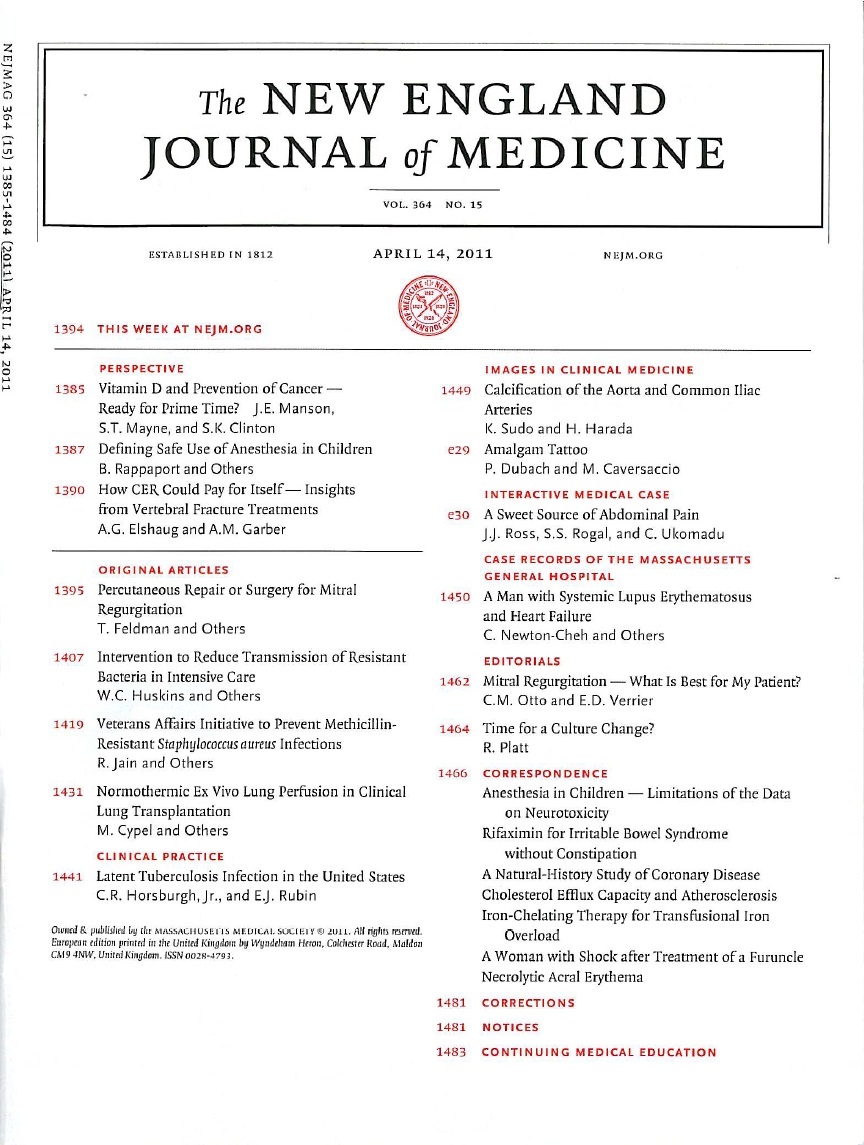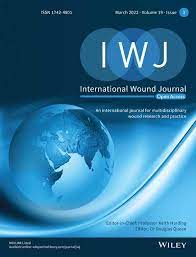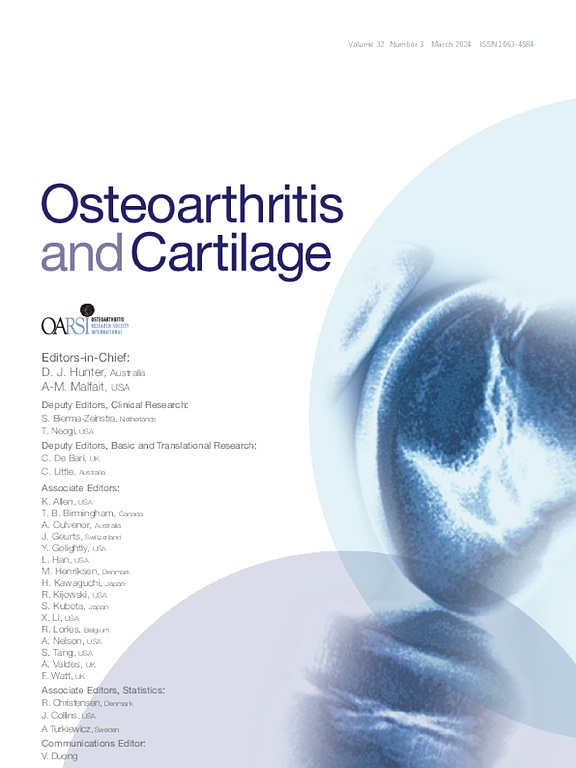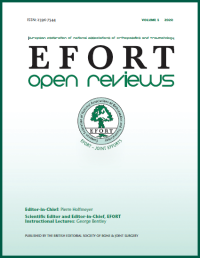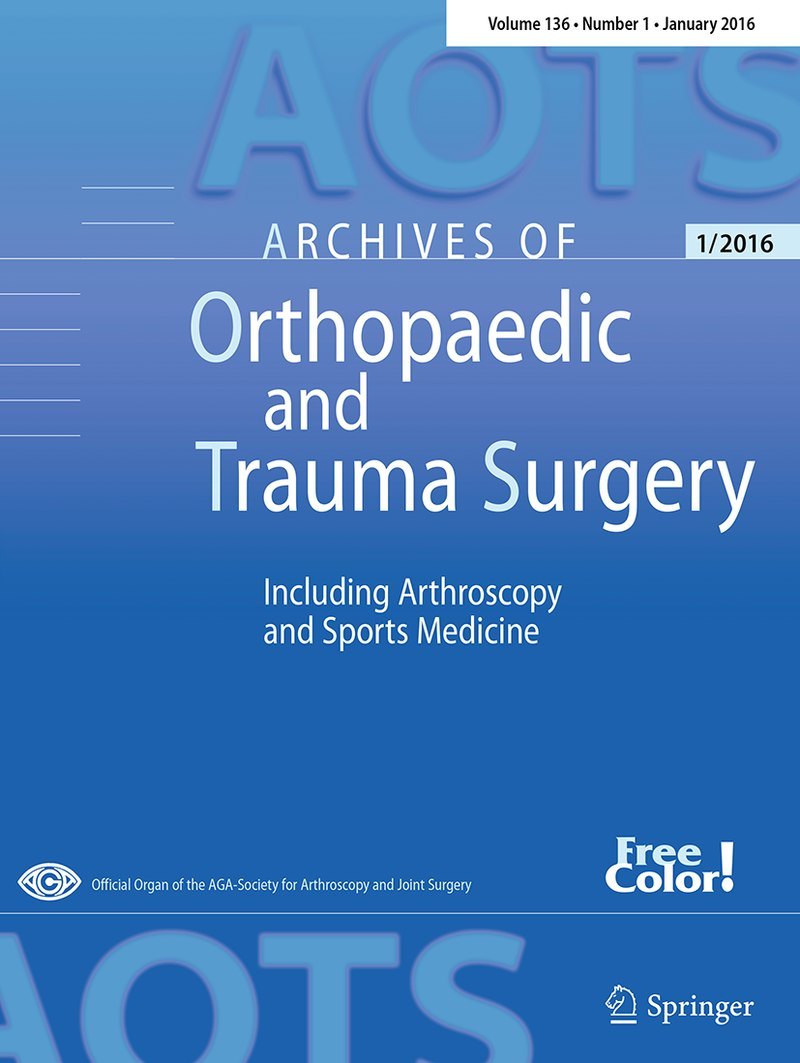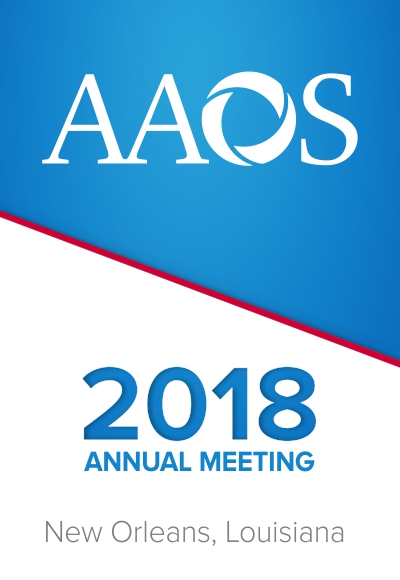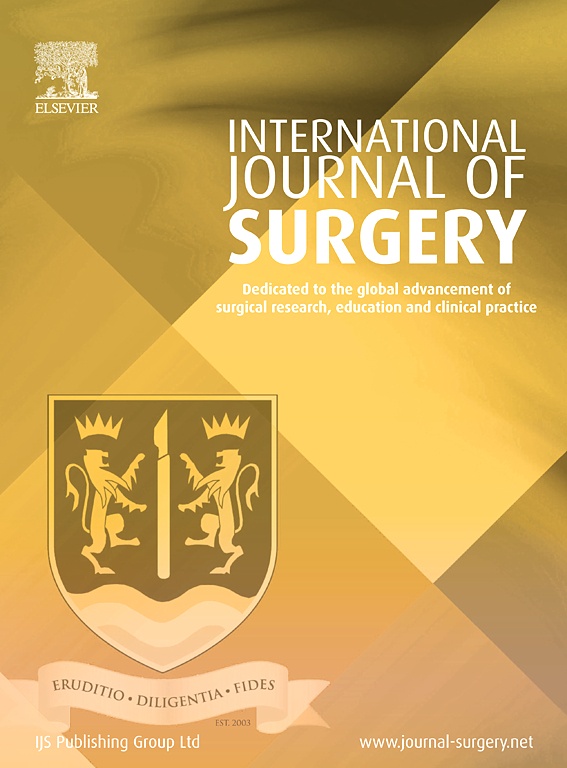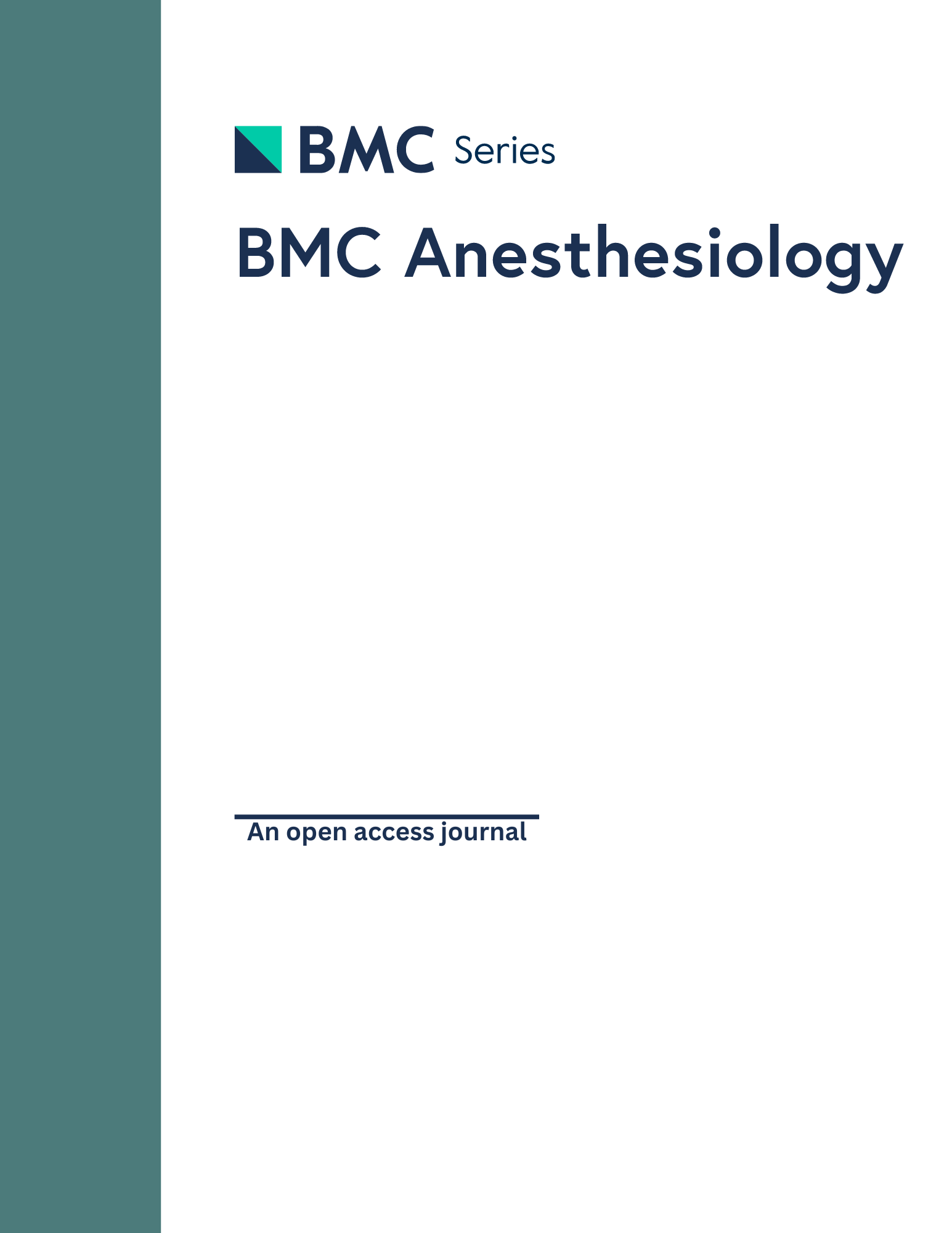PeerView
You are viewing the most viewed ACE Reports by Orthopaedic Surgeons over the last 30 days in all specialties.
Displaying
100%
①
Synopsis:
132 patients between the ages of 50 and 80 years undergoing primary, unilateral total knee arthroplasty (TKA) were included in this single-center, 3-arm, triple blinded trial.Patients were randomized to receive either an interspace between the popliteal artery and capsule of the posterior knee block (iPACK; n=44), genicular nerve block (GNB; n=44) or a combination of the two (iPACK+GNB; n=44) alongside combined spinal anesthesia and continuous adductor canal block.The primary outcome of interest was 8-hour postoperative knee pain during movement, measured using a visual analog scale (VAS).The secondary outcomes of interest included VAS knee pain and posterior knee pain during rest and movement in the post anesthesia care unit (PACU) and at 4, 8, 12, 24, 36, and 48 hours, morphine consumption at 12, 24 and 48 hours, sensorimotor function of the tibial and common peroneal nerve (CPN), timed up and go (TUG) scores, range of motion (ROM), and quadriceps strength (QMS).Additional outcomes included the length of hospital stay, quality of sleep, and patient satisfaction.According to study findings, a significant difference for VAS knee pain during movement, VAS knee pain at rest, and VAS posterior knee pain at rest and during movement was found for all groups at 4, 8, and 12 hours, as well as for VAS knee pain during movement at 24 hours, and VAS knee pain at rest and on movement and VAS posterior knee pain on movement at 48 hours.However, this difference was only clinically significant for the iPACK+GNB group VAS knee pain during movement scores at 4- and 8-hours when compared with the iPACK group. No clinically significant...
Read More »
Author verified Level 1 RCT
①
Synopsis:
9535 patients undergoing non-cardiac surgery were randomized to receive tranexamic acid (n=4757) or placebo (n=4778) at the start and end of surgery.The primary efficacy outcome was a composite bleeding outcome of life-threatening bleeding, major bleeding, or bleeding into a critical organ.The primary safety outcome was a composite endpoint of myocardial injury, non-hemorrhagic stroke, peripheral arterial thrombosis, or symptomatic proximal venous thromboembolism, which was tested for non-inferiority vs.placebo.The results of the trial found a significantly lower rate of composite bleeding events in the tranexamic acid group vs.placebo (9.1% vs.11.7%, p<0.001).However, the non-inferiority of tranexamic acid was not established for the composite cardiovascular safety outcome (14.2% vs. 13.9%, p=0.04 [p<0.025...
Read More »
Level 1 RCT
①
Synopsis:
Fifteen studies involving a total of 353,169 patients undergoing knee or hip arthroplasty were included in this meta-analysis.Among them, 156,405 patients received Spinal Anaesthesia (SA), while 196,764 patients underwent General Anaesthesia (GA).The primary outcome assessed was the incidence of Postoperative Surgical Site Infections (SSIs).Outcomes were evaluated up to 30 days post-surgery. This meta-analysis reveals...
Read More »
Level 1 Meta Analysis
①
Synopsis:
Three randomized controlled trials, involving a total of 343 patients with anterior cruciate ligament (ACL) injury, were included in this systematic review and meta-analysis comparing ACL surgery (Treatment A) vs.non-surgical treatment (Treatment B).Of the total participants, 180 underwent ACL reconstruction surgery, while 163 received non-surgical treatment.The primary outcome of interest was the development of knee osteoarthritis, which was assessed using the Kellgren-Lawrence scoring system, with a follow-up duration ranging from 2 to 11.1 years. The meta-analysis revealed...
Read More »
Level 1 Meta Analysis
①
Synopsis:
A total of five randomized controlled studies including 181 patients undergoing arthroscopic surgery for degenerative arthropathy of the knee were included in this systematic review and meta-analysis comparing the addition of intra-articular hyaluronic acid (HA) immediately after surgery (Treatment A, n=181) vs.placebo or no additional treatment (Treatment B, n=182).Pooled outcomes of interest included postoperative pain using the visual analog scale (VAS), and functional recovery using the Western Ontario and McMaster University Osteoarthritis Index (WOMAC) score, International Knee Documentation Committee (IKDC), Tegner score, and Lysholm score.There was no statistically significant difference in pain relief and functional outcomes between both groups.Therefore, the addition of HA immediately after surgery provided no discernible benefit to pain relief or knee function.
Read More »
Level 1 Meta Analysis
①
Synopsis:
Two hundred eighteen patients with non-displaced femoral neck fractures in elderly individuals were randomized to receive internal fixation using either percutaneous compression plate (PCCP; n=97 analyzed) or parallel screws (PS; n=97 analyzed).The primary outcome of interest was the time to full weight-bearing, with secondary outcomes including operative time, intraoperative blood loss, hemoglobin level drop, postoperative hospital stay, reduction quality, fracture healing time, Harris hip score, and postoperative complications.Outcomes were assessed at 6 weeks, 3 months, 6 months, 9 months, and 1 year after surgery. The study reveals...
Read More »
Level 1 RCT
Synopsis:
38 adolescents with 50 knees affected by Osgood-Schlatter disease were randomized to three monthly treatments of either prolotherapy with a dextrose solution, or so sham prolotherapy with saline.Patients were assessed for function on the Victorian Institute of Sport Assessment (VISA) score after 1, 2 and 3 months. Results demonstrated no...
Read More »
Conference Report
①
Synopsis:
In this systematic review and meta-analysis, six studies of 6772 patients who received prophylactic anticoagulant therapy after total knee arthroplasty (TKA) were analysed to compare aspirin versus low-molecular-weight heparin (LMWH).Pooled outcomes of interest included the incidence of VTE, deep venous thrombosis (DVT), pulmonary embolism (PE), as well as bleeding complications rates.The pooled results indicated that LMWH significantly reduced the overall rate of suffering from VTE compared to aspirin (RR 1.46, 95% CI: 1.16–1.84). However, there were...
Read More »
Level 1 Meta Analysis
②
Synopsis:
38 patients patients scheduled for ankle fusion and/or subtalar fusion under continuous popliteal sciatic nerve block were randomized to receive 30 mL ropivacaine (0.75%) with or without the addition of epinephrine (5 ug/mL).The purpose of the study was to determine how the duration of postoperative analgesia was affected by the addition of epinephrine, as measured by the time elapsed from poplitear catheter placement until the time of first request for postoperative analgesia via patient controlled analgesia. Results indicated that...
Read More »
Author verified Level 2 RCT
①
Synopsis:
Eight studies, including 615 patients who underwent total hip arthroplasty (THA), were analyzed in this systematic review and meta-analysis comparing the Direct Anterior Approach (DAA; n=303) to the Postero-Lateral Approach (PLA; n=312).Pooled outcomes of interest included surgical site infection rate, duration of the operation, length of incision, and pain scores using the visual analog scale (VAS) after surgery.The meta-analysis revealed no statistically significant difference in wound infections between DAA and PLA.However, DAA was associated with a shorter incision length, longer operative times, and lower postoperative pain VAS scores within 6 weeks. Additional research is...
Read More »
Level 1 Meta Analysis




 LOGIN
LOGIN


